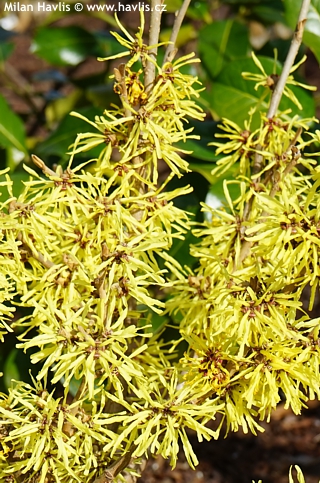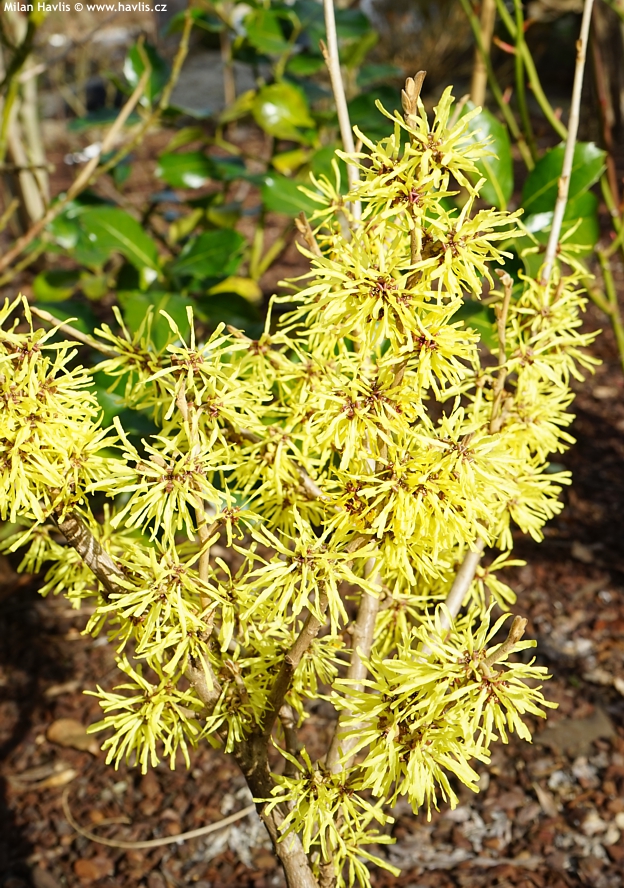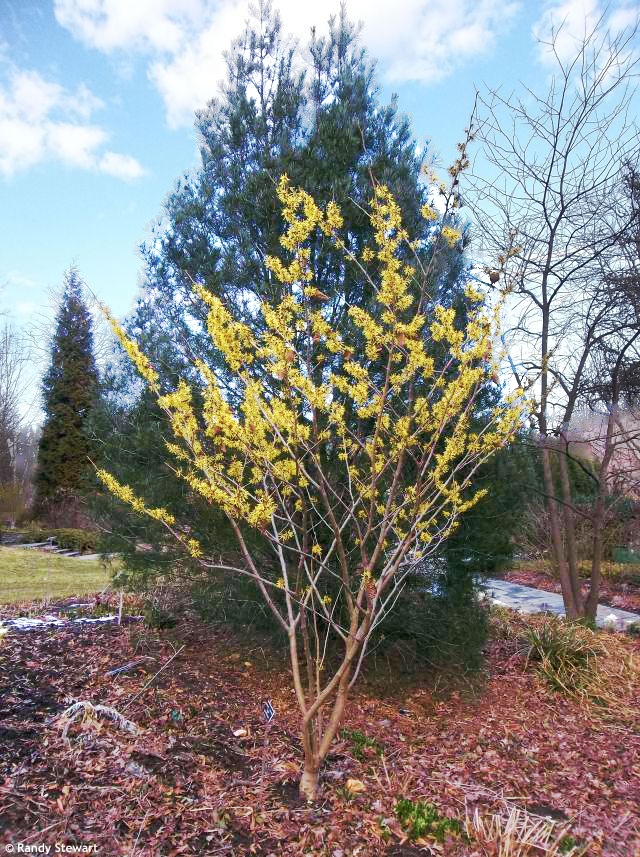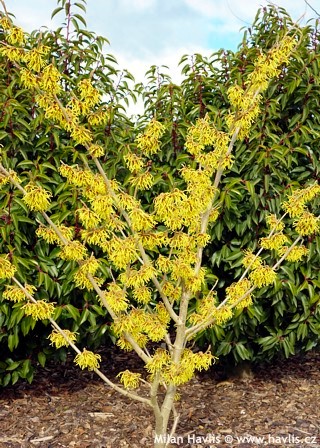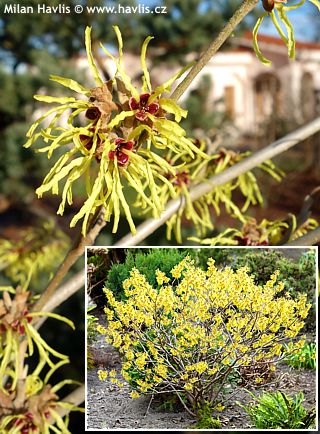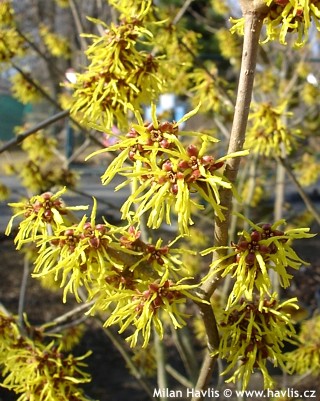Hamamelis x intermedia 'ANGELLY' witch hazel
size/type
taller shrub,taller shrub
usual height
2-3m
usual width
2-2,5m
leaves
deciduous broadleaf
colour of leaves
flowers
showy
colour of flowers
blooming time
February-March
location
full to partial sun
soil type
acidic (peaty)
soil moisture requirements
evenly moist (dislikes drought)
USDA zone (lowest)
5 (down to -29°C)
winter protection
for zone 5+6

for zone 7

categorized
Hamamelis
Witch hazels are unique shrubs that offer profuse flowering at times when everything else in the garden looks dull and far from cheerful. They are hybrids Asian species h.japonica and h.mollis. They form deciduous, mid-sized shrubs or small trees of an open vase shape, and thanks to its maximum size of about 3m they fit even a small garden.Description of the plant:
Angelly is a Dutch witch hazel variety with bright, lighter yellow flowers of wider petals as opposed to Arnold Promise variety of which it is a successor. They come out later than most, usually from mid to late February, and continue blooming for 6-8 weeks. They are pleasantly fragrant, releasing a mild, sweet and spicy perfume on a sunny day. Angelly is a compact, slower growing variety, producing flowers already from the base. Another thing makes witch hazels very attractive – autumn foliage colour. The leaves are deciduous, similar to hazel, rounded but larger, and turn yellow, orange or red in autumn. Angelly was bred by Jan van Hejningen in 1985 and introduced two year later at Flora Nova Show at Dutch nursery town Boskoop. Jan was a teacher of botany and a hamamelis expert. He crossbred at least 7 varieties, all of which have names beginning with a letter A. Angelly was named after his daughters Angeline and Elly.
Grow them in acid to neutral, moist but well drained soil. They don’t tolerate lime or hard pruning when older. Sunny location or light semi-shade is best. Fully hardy to about -29°C (USDA zone 5) but exposed sites are not recommended.
Last update 25-02-2020
QUICK PRICE OVERVIEW
CURRENTLY SOLD OUT
WANT TO TRY A SIMILAR PLANT?












